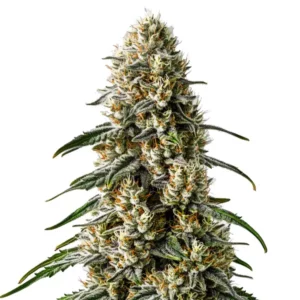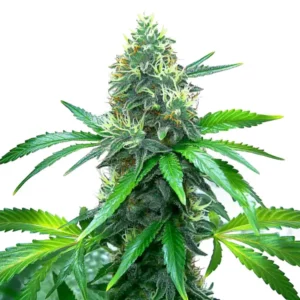
Panic Disorder: What You Need to Know
Panic disorder is a condition that can affect anyone. It’s characterized by sudden and repeated episodes of intense fear, known as panic attacks. These attacks can strike without warning and can be incredibly frightening. You might feel like you’re losing control or even having a heart attack. Recognizing the symptoms is the first step toward managing the disorder.
Imagine being at work, trying to focus on a project, when suddenly your heart races, and you feel a wave of anxiety crash over you. This is a typical scenario for someone living with panic disorder and anxiety. It’s not just about the fear; it’s about how it disrupts everyday life. The good news is, there are strategies to manage this condition effectively.
Recommended Strains
Mimosa
|
|
THC | 24% - 30% (High) |
|
|
Type | Feminized |
|
|
Yield | High |
|
|
Phenotype | 30% Indica / 70% Sativa |
Mimosa XXL Auto
|
|
THC | 18% - 20% (Medium) |
|
|
Type | Autoflowering |
|
|
Yield | Medium |
|
|
Phenotype | 50% Indica / 50% Sativa |
From natural remedies for panic disorder to professional treatments, a variety of options can make living with panic disorder more manageable. You might be surprised to learn that some cannabis strains, like those from Blimburn Seeds, can also play a role in alleviating symptoms. Let’s dive into how you can tackle panic disorder and regain a sense of normalcy in your life.
Symptoms and Causes
Panic disorder symptoms can vary from person to person. However, common symptoms include heart palpitations, sweating, trembling, and a sense of impending doom. It’s crucial to note that these symptoms can mimic other health issues, so getting a proper diagnosis from a healthcare professional is important.
The causes of panic disorder aren’t entirely understood, but several factors can contribute. Genetics, major stress, and changes in brain function may all play a part. Sometimes, it’s a combination of these factors that trigger the disorder. Knowing what might be causing your panic attacks can help you find the most effective treatment.
In exploring the symptoms further, it’s important to recognize that panic disorder can sometimes lead to avoidance behavior. People might start avoiding certain places or situations where they fear a panic attack could occur. This can further isolate individuals and impact their quality of life.
Additionally, knowing the root causes can empower you to take control of your health. For example, if major stress is a significant trigger, stress-reduction techniques and lifestyle changes can be particularly beneficial. Addressing underlying stressors is a valuable part of managing panic disorder effectively.
Promos & Deals
Effective Treatments
There are various treatment options available for panic disorder. Cognitive behavioral therapy for panic disorder is one of the most effective methods. This type of therapy helps you understand and change the thought patterns that lead to panic attacks. By recognizing these patterns, you can work on altering them to reduce the frequency of attacks.
Medication can also be an essential part of treatment. The best medications for panic disorder treatment typically include antidepressants and benzodiazepines. These medications can help control the symptoms and prevent attacks, but they should be used under the guidance of a healthcare provider.
Another aspect of effective treatment is the integration of lifestyle changes. Regular physical activity, maintaining a balanced diet, and ensuring adequate sleep can complement medical treatments and therapy. These changes can provide a solid foundation for managing panic disorder.
It’s also worth considering support groups as part of your treatment plan. Connecting with others who understand what you’re going through can provide emotional support and practical advice. Sharing experiences can be a powerful way to gain insights into managing panic disorder.

Living with Panic Disorder
Living with panic disorder can be challenging, but it’s important to remember that you’re not alone. Support groups and therapy sessions can provide a sense of community and knowing. Sharing experiences with others who know what you’re going through can be incredibly comforting.
Managing panic disorder at work can be particularly difficult. Open communication with your employer about your condition can help create a supportive work environment. Simple steps, like taking regular breaks and practicing breathing exercises, can also make a big difference.
Additionally, it’s crucial to develop coping mechanisms that you can rely on during high-stress situations. Techniques like visualization, where you imagine yourself in a calm place, can be useful in reducing anxiety levels when panic attacks threaten to disrupt your day.
Another key to living with panic disorder is building a strong support network at home and in your social circles. Family and friends who are educated about the condition can offer encouragement and help remind you of the strategies you’ve learned to manage your anxiety.
Practical Tips for Managing Panic Disorder
There are several practical strategies you can implement to help manage panic disorder. Keeping a journal of your panic attacks can help you identify triggers and patterns. Once you know what sets off your attacks, you can work on avoiding or managing these triggers.
- Regular exercise can significantly reduce anxiety levels.
- Learning relaxation techniques, such as deep breathing and meditation, can help you calm down during an attack.
- Consider incorporating certain cannabis strains into your routine. Strains like Blue Dream, available at Blimburn Seeds, are known for their calming effects.
A balanced diet with plenty of fruits, vegetables, and whole grains can also support your mental health. It’s amazing how simple lifestyle changes can make such a big impact on your overall wellbeing.
Engaging in hobbies or activities that bring you joy can also serve as a valuable distraction and help you manage stress. Whether it’s painting, gardening, or reading, having a hobby can provide a much-needed break from the daily grind.
Moreover, technology can be an ally in managing panic disorder. Apps designed for anxiety management offer guided meditations, breathing exercises, and mood tracking features, which can be excellent tools to have at your fingertips.
Cannabis Strains for Panic Disorder
Some cannabis strains are particularly effective for those dealing with panic disorder. Cannabis can help relax the mind and body, making it easier to manage anxiety. One such strain is Bubba Kush, known for its calming and sedative effects.
Another excellent option is Harlequin, a strain with a high CBD content. This strain is available at Blimburn Seeds and is popular for its ability to alleviate anxiety without the psychoactive effects of THC. It’s perfect for those who need to remain clear-headed during the day.
When incorporating cannabis into your treatment plan, it’s important to consult with a healthcare provider to ensure it’s a suitable option for you. They can provide guidance on dosage and help monitor its effects on your symptoms.
It’s also worth noting that not all cannabis strains are beneficial for panic disorder. Some strains high in THC might exacerbate anxiety. Thus, focusing on CBD-rich options can be a safer choice for those looking to manage panic disorder naturally.

FAQs About Panic Disorder
What is panic disorder?
Panic disorder is a mental health condition characterized by recurrent and unexpected panic attacks. These attacks can be debilitating, causing intense fear and physical symptoms like a racing heart and shortness of breath. It’s essential to seek help if you suspect you have panic disorder, as effective treatments are available.
While panic attacks are common, having them frequently or without a clear trigger may indicate panic disorder. Knowing the condition and getting a proper diagnosis is the first step toward managing it effectively. Professional treatment can help reduce the frequency and severity of panic attacks.
It’s important to differentiate panic disorder from general anxiety. While both involve intense fear, panic disorder is marked by sudden attacks that can feel overwhelming. This distinction is crucial for selecting the right treatment approach.
Early intervention is key in managing panic disorder. The sooner you recognize the symptoms and seek help, the better your chances of minimizing its impact on your life. With the right treatment and support, individuals with panic disorder can lead fulfilling lives.
How can I manage panic disorder naturally?
There are several natural remedies for panic disorder that can help manage the condition. Regular exercise, a healthy diet, and mindfulness practices like meditation can significantly reduce anxiety levels. Incorporating these habits into your daily routine can be beneficial.
Additionally, certain cannabis strains, such as those available from blimburnseeds.com, can provide relief. Strains high in CBD, like Harlequin, are especially effective in reducing anxiety without causing a high, making them ideal for daytime use.
Natural remedies for panic disorder also include techniques like yoga and tai chi, which combine physical movement with mindfulness. These practices can help center the mind and reduce stress, making them valuable tools for managing symptoms.
Moreover, aromatherapy, using oils like lavender and chamomile, can create a calming environment that may help reduce the occurrence of panic attacks. These oils can be used in diffusers or added to baths for a relaxing effect.
Is cognitive behavioral therapy effective for panic disorder?
Cognitive behavioral therapy (CBT) is one of the most effective treatments for panic disorder. It focuses on changing negative thought patterns that lead to panic attacks. By identifying and altering these thoughts, CBT can help reduce the frequency and intensity of attacks.
Many people find CBT beneficial because it provides practical tools and strategies to manage panic disorder. It’s a structured approach that empowers individuals to take control of their condition and improve their quality of life.
Cognitive behavioral therapy for panic disorder often includes exposure therapy, where patients are gradually exposed to panic-inducing situations in a controlled environment. This helps build resilience and reduce the fear associated with panic attacks.
Another component of CBT is learning coping strategies that can be used during a panic attack. Techniques such as grounding exercises, where you focus on the present moment, can help mitigate the attack’s impact and restore a sense of calm.
What are the best medications for panic disorder treatment?
The best medications for panic disorder treatment often include antidepressants and benzodiazepines. Antidepressants, such as SSRIs, can help reduce the frequency of panic attacks and manage anxiety. Benzodiazepines provide quick relief of acute symptoms but are typically used short-term.
It’s important to work with a healthcare provider to determine the most suitable medication for your situation. They can guide you in finding the right balance of medication and other treatment strategies to effectively manage the disorder.
In some cases, beta-blockers may also be prescribed to help manage physical symptoms associated with panic attacks, such as heart palpitations. These medications can be particularly useful for managing situational anxiety.
When considering the best medications for panic disorder treatment, it’s crucial to evaluate the potential side effects and weigh them against the benefits. This decision should be made collaboratively with your healthcare provider to ensure optimal treatment outcomes.
How can I manage panic disorder at work?
Managing panic disorder at work requires proactive strategies. Open communication with your employer about your condition can lead to a more supportive work environment. Simple accommodations, like flexible hours or a quiet space, can make a significant difference.
Practicing stress-reduction techniques, such as deep breathing exercises or taking short breaks throughout the day, can help manage anxiety. Incorporating calming activities into your daily routine can also support your mental health and improve your work performance.
Another important aspect of managing panic disorder at work is setting realistic goals and priorities. Breaking tasks into smaller, manageable steps can reduce the feeling of being overwhelmed and help maintain productivity.
Finally, consider creating a calming workspace with personal touches that bring you comfort, such as photos or plants. Having a space where you feel at ease can help mitigate stress and create a more positive work experience.



















